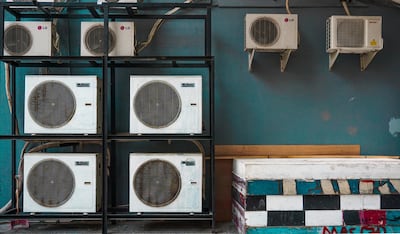Those who live in hot countries like the UAE will know the importance of air-conditioning, especially during the hot summer months, but keeping it on all the time is neither financially nor environmentally friendly.
But what if we could cool our apartments with something as simple as a new lick of paint? Engineers at Purdue University in Indiana, US, have done just that, by creating the world’s "whitest white paint", capable of reflecting up to 98.1 per cent of sunlight and keeping buildings cool from the outside in.
The paint, which took six years to develop, was created by improving upon the formulation of an ultra-white paint, also created by teams at Purdue University and capable of reflecting 95.5 per cent of sunlight, by using very high levels of barium sulfate, which is also a key ingredient in photographic paper and cosmetics.
Scientists say the formulation could be used for coating buildings in order to reduce the need for ventilation and, therefore, the amount of electricity being used.
Xiulin Ruan, an engineer involved with the project, said the paint would be most beneficial in warmer, poorer regions where air-conditioning is not widely available, such as in India or Africa.
“[The paint is] similar to an air-conditioner, but without the need of electricity," Ruan said.
The paint was tested at buildings across Indiana and it was found that it kept surfaces 4.5°C cooler than their surroundings at the height of the day, and 10.5°C cooler at night. Commercial paint, by contrast, increased surface temperatures by 6.8°C.
The majority of normal white paints on the market use titanium oxide as a filler, and are capable of reflecting between 80 and 90 per cent of sunlight. “That means these products absorb 10-20 per cent of sunlight,” Ruan explained. “We looked at the available white commercial paints to see what we could do differently, and wanted to come out with a better nanotechnology.”
Scientists predict that if a roof that was roughly 90 square metres in size was coated with the new paint formulation, it would result in typical cooling of 10kW – more powerful than the typical home central air-conditioner.
The team have put in a patent for the product and says that, subject to further testing, it could be on the market within the next year or two.



